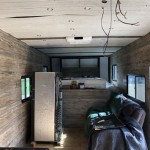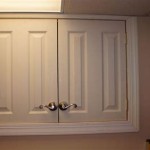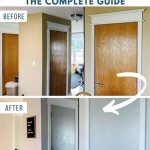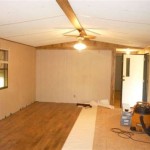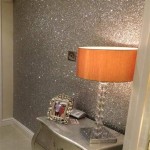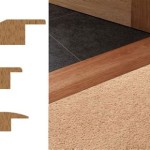How Much to Charge to Paint the Interior of a House
Determining the appropriate price for painting the interior of a house is a multifaceted process, involving careful consideration of various factors. Establishing a competitive and profitable rate requires a comprehensive understanding of labor costs, material expenses, the scope of the project, and prevailing market rates. This article will delve into the key elements that contribute to estimating interior painting costs, providing a framework for accurate and informed pricing decisions.
The goal is to create a pricing strategy that fairly compensates the painting contractor for their expertise and effort while remaining attractive to potential clients. A poorly calculated price can lead to financial losses or deter customers, hindering the growth and sustainability of the painting business.
Key Point 1: Calculating Labor Costs
Labor costs form a significant portion of the overall painting price. Accurate estimation requires breaking down the project into its constituent tasks and assessing the time required for each. These tasks include surface preparation, priming, painting, and cleanup.
Surface preparation is often the most time-consuming aspect of interior painting. This encompasses tasks such as washing walls, patching holes and cracks, sanding rough surfaces, and applying joint compound. The extent of surface preparation depends on the condition of the existing walls. Walls with extensive damage or pre-existing wallpaper will require significantly more time and effort than walls that are in relatively good condition.
The hourly rate for painting labor varies depending on geographical location, the painter's experience level, and the complexity of the job. Researching the average hourly rate for painters in the specific region is crucial. Factors influencing the hourly rate include the cost of living, local demand for painting services, and the presence of union regulations. In metropolitan areas, the hourly rate will generally be higher compared to rural areas.
To calculate labor costs, determine the estimated time required for each task and multiply it by the hourly rate. For example, if preparing a room requires 8 hours of labor and the hourly rate is $40, the labor cost for surface preparation in that room will be $320. Repeat this calculation for each task in each room, including priming, painting (typically two coats), and cleanup.
Consider the number of painters required for the project. Larger projects or projects with tight deadlines may necessitate hiring additional painters. The labor cost calculation should account for the hourly rate and working hours of each painter involved.
Accurate record-keeping and tracking of actual labor hours spent on previous projects can provide valuable data for future estimations. This historical data can help refine the estimation process and improve the accuracy of labor cost predictions.
Key Point 2: Assessing Material Expenses
Material expenses encompass the cost of paint, primer, brushes, rollers, tape, drop cloths, patching compounds, sandpaper, and other supplies required for the painting project. Selecting high-quality materials can enhance the finished product and improve customer satisfaction.
Paint is typically the most significant material expense. The type of paint chosen (e.g., acrylic latex, oil-based, enamel) will influence the price. Interior paint comes in various sheens, such as matte, eggshell, satin, semi-gloss, and gloss, each with different properties and price points. The required number of paint gallons will depend on the square footage of the surfaces to be painted and the number of coats required.
Primer is applied before the paint to improve adhesion, seal porous surfaces, and provide a uniform base for the paint. The cost of primer will vary depending on its type (e.g., oil-based, latex, shellac) and its intended use (e.g., stain-blocking, mildew-resistant).
Calculate the quantity of each material needed based on the scope of the project. Use the manufacturer's coverage rates for paint and primer to estimate the number of gallons required. Add a buffer to account for spills, waste, and variations in surface porosity.
Obtain quotes from multiple paint suppliers to compare prices and negotiate discounts. Establishing relationships with reliable suppliers can result in cost savings over time. Explore options for bulk discounts or contractor pricing.
Include the cost of all necessary supplies in the material expense calculation. Don’t overlook smaller items like brushes, rollers, tape, drop cloths, sandpaper, patching compounds, and cleaning supplies. These seemingly minor expenses can add up significantly over the course of a project.
Key Point 3: Factoring in Project Complexity and Overhead
The complexity of the painting project and the contractor's overhead costs also play a crucial role in determining the final price. Projects that involve intricate details, challenging surfaces, or specific client requests will generally command a higher price.
Rooms with high ceilings, ornate trim, or extensive architectural details require more time and skill to paint. Similarly, painting around built-in cabinets, bookshelves, or other obstacles can increase the complexity of the project.
Surface conditions can significantly impact the project's complexity. Painting over dark colors requires more coats of paint than painting over light colors. Walls with extensive damage, stains, or wallpaper removal will demand more extensive preparation and time.
Client requests can also add to the project's complexity. Specific paint colors, custom finishes, or intricate masking requirements will increase labor and material costs.
Overhead costs encompass the expenses associated with running the painting business. This includes insurance, vehicle maintenance, advertising, office supplies, and administrative costs. These costs must be factored into the pricing strategy to ensure profitability.
Calculate the company's overhead costs on a monthly or annual basis. Allocate a portion of these costs to each project based on its size and duration. This allocation will ensure that overhead expenses are covered in the final price.
Profit margin is another critical consideration. The profit margin represents the percentage of revenue that the company retains after covering all expenses. A reasonable profit margin is essential for the long-term sustainability of the business. The specific profit margin will depend on the company's financial goals, market conditions, and competitive landscape.
Consider offering different pricing options to cater to a wider range of clients. For example, offer a basic package that includes standard surface preparation and two coats of paint, and a premium package that includes more extensive surface preparation, premium paint, and custom finishes.
Regularly review and update pricing strategies to reflect changes in labor costs, material expenses, and market conditions. Staying informed about industry trends and competitor pricing will ensure that the company remains competitive and profitable.
Obtaining necessary permits is another factor to consider. Some municipalities require permits for interior painting projects, especially for larger-scale renovations. The cost of these permits should be included in the overall project cost.
The accessibility of the project site can also affect pricing. If the painting crew has to navigate difficult access points, such as multiple flights of stairs or limited parking, it will add time and effort to the project.
Finally, it is important to clearly communicate the scope of work and pricing to the client in a written contract. This contract should outline the specific tasks to be performed, the materials to be used, the total price, and any payment terms. A well-defined contract can help prevent misunderstandings and disputes.

How Much Does It Cost To Paint The Interior Of A House In Paintrite Pros

How Much Does It Cost To Paint The Interior Of A House In Paintrite Pros

Today Painting Work Cost Of For House 2024 Interior Primer

How Much Does It Cost To Paint A Room 2025 Data Angi

4 Ways To Calculate Per Square Foot For House Painting

2025 Interior Painting Costs Average Cost To Paint Of House

4 Ways To Calculate Per Square Foot For House Painting

How Much Does It Cost To Paint A Home Interior Certapro

How Much Does It Cost To Paint The Interior Of A House 2025 Data Angi

How Much Does It Cost To Paint A Home Interior Certapro
Related Posts


